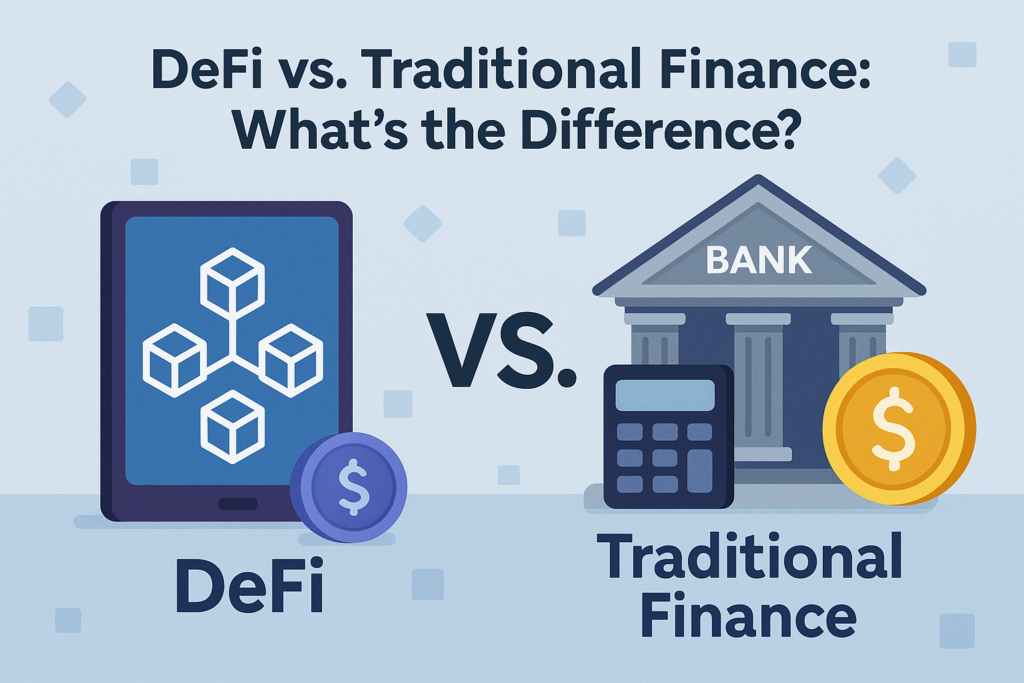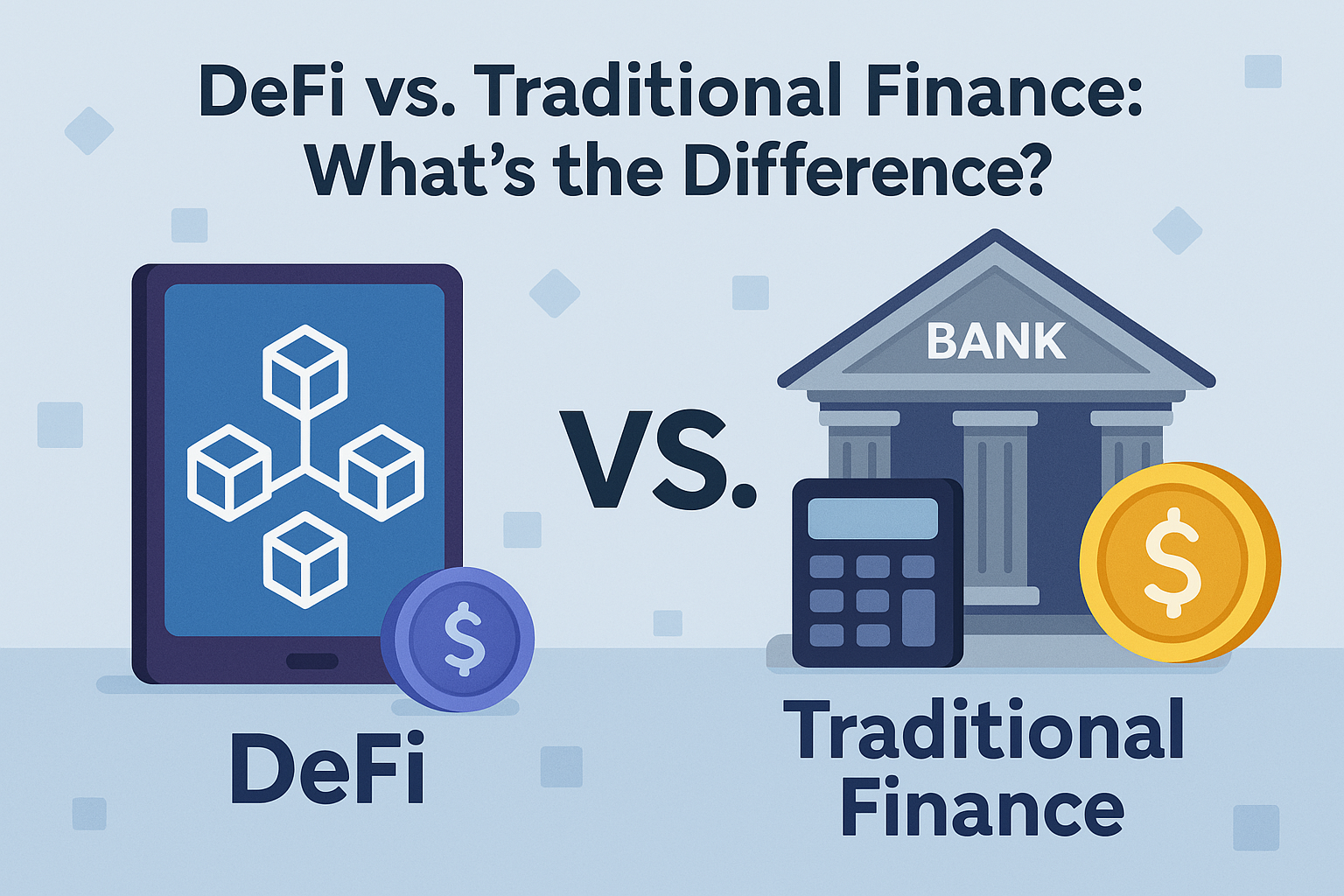The rise of Decentralized Finance (DeFi) has prompted a growing conversation around how it compares to the traditional financial (TradFi) systems we use daily, such as banks, brokerage firms, and insurance providers. Understanding these differences can help individuals better navigate and leverage the opportunities that DeFi presents.
What is Traditional or Centralized Finance (TradFi or CeFi)
Traditional finance, also commonly called centralized finance, refers to the conventional systems and institutions like banks, insurance companies, brokerage firms, and financial regulators. It relies on centralized intermediaries to manage and facilitate financial transactions.
What is Decentralized Finance (DeFi)
Decentralized finance refers to financial services enabled by blockchain technology, eliminating the need for traditional intermediaries and allowing direct peer-to-peer transactions governed by smart contracts.
Key Differences Between DeFi and CeFi

1. Centralization vs. Decentralization
CeFi: Relies on centralized institutions (e.g., banks) that control transactions, assets, and decision-making.
DeFi: Transactions are decentralized, managed by automated smart contracts on blockchain networks without central authorities.
2. Accessibility
CeFi: Often involves stringent entry requirements, such as credit checks, identification documents, and geographical restrictions.
DeFi: Open and accessible to anyone with an internet connection and crypto wallet, without extensive documentation or credit verification.
3. Transparency
CeFi: Limited transparency with transactions recorded privately within institutions, making full auditing difficult for users.
DeFi: Complete transparency due to transactions recorded publicly on blockchain, allowing anyone to audit and verify.
4. Custody & Ownership
CeFi: Assets are typically held by banks or brokers, with individuals relying on institutional security.
DeFi: Users retain full custody and control of their assets within personal crypto wallets.
5. Speed & Efficiency
CeFi: Transactions, especially cross-border, can take days due to intermediary processes and settlement periods.
DeFi: Transactions usually settle within minutes or seconds due to automation and absence of intermediaries.
6. Costs & Fees
CeFi: Transaction and service fees can be high due to the involvement of multiple intermediaries.
DeFi: Generally lower fees because transactions require fewer intermediaries, though network congestion can sometimes temporarily increase costs.
7. Risk Management & Security
CeFi: Institutions typically offer insurance protections (e.g., FDIC insurance), but users must trust institutions’ security measures.
DeFi: No institutional protections; security depends entirely on the integrity of the smart contracts and users’ own security practices.
Practical Examples: CeFi vs. DeFi
Lending and Borrowing
CeFi: Borrowing often involves credit checks, lengthy approvals, and collateral managed by banks.
DeFi: Platforms like Aave or Compound allow users to lend and borrow instantly without credit checks, secured by crypto collateral.
Asset Trading
CeFi: Stock exchanges or brokerages manage trades, with limited trading hours.
DeFi: Decentralized exchanges (DEXs) like Uniswap operate 24/7, allowing continuous trading without intermediaries.
CONCLUSION: Which is Better?
Neither system is universally superior—each serves different needs and user preferences. CeFi offers regulatory certainty and institutional protections, while DeFi provides greater accessibility, autonomy, transparency, and potential efficiency.
Ultimately, understanding the key differences empowers users to make informed decisions that best match their financial goals and risk tolerance.

